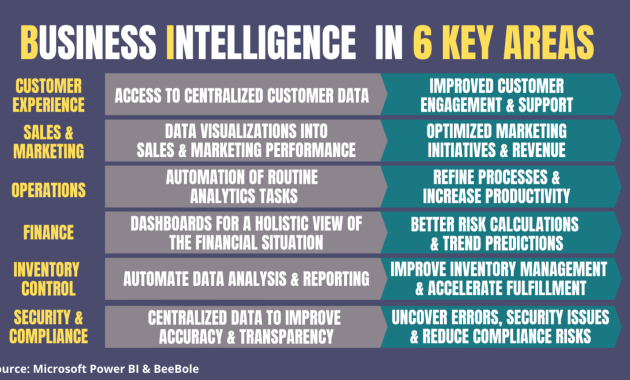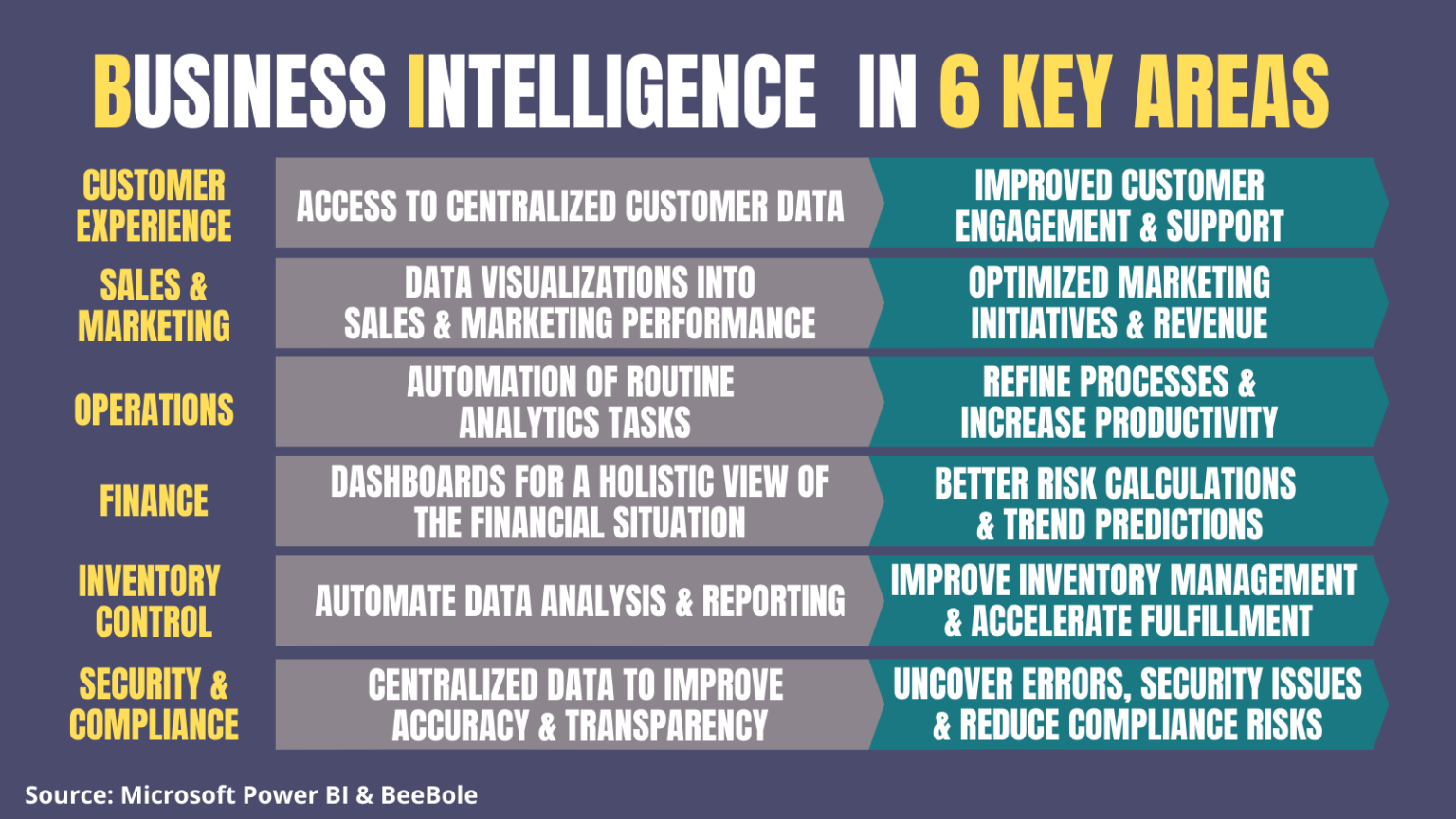
Top 3 Business Intelligence Tools You Can’t Ignore in 2024
In today’s data-driven world, businesses are drowning in information. The ability to extract meaningful insights from this data is no longer a luxury, but a necessity. This is where Business Intelligence (BI) tools come into play. They transform raw data into actionable intelligence, empowering organizations to make informed decisions and gain a competitive edge. This article delves into the top 3 business intelligence tools that are essential for any business looking to thrive in 2024.
The choice of BI tools can significantly impact a company’s ability to analyze data, identify trends, and ultimately, drive growth. Selecting the right tool requires careful consideration of factors such as data volume, user experience, and integration capabilities. This piece will provide an overview of three leading solutions, highlighting their key features and benefits. These tools are designed to help businesses of all sizes unlock the power of their data. The following selections are based on market analysis, user reviews, and industry expert opinions.
The Rise of Data-Driven Decision Making
The shift towards data-driven decision-making has been exponential in recent years. Businesses are increasingly relying on data analytics to understand customer behavior, optimize operations, and identify new opportunities. The top business intelligence tools are at the forefront of this transformation. They enable organizations to move beyond gut feelings and make decisions based on concrete evidence.
The benefits of using BI tools are numerous. They include improved efficiency, better customer understanding, and enhanced profitability. These tools also facilitate better collaboration across departments. They are also important for risk management. By providing real-time insights, BI tools allow companies to respond quickly to market changes and mitigate potential threats.
Tool One: Power BI from Microsoft
Microsoft Power BI has emerged as a leading business intelligence tool, favored by businesses of all sizes. Its popularity stems from its intuitive interface, powerful features, and seamless integration with other Microsoft products. Power BI allows users to connect to a wide variety of data sources, from spreadsheets to cloud databases. It offers robust data visualization capabilities, enabling users to create interactive dashboards and reports. These reports help to communicate complex information in an easily understandable format.
Key features of Power BI include:
- Data Connectivity: Connects to various data sources.
- Data Modeling: Enables data transformation and modeling.
- Data Visualization: Creates interactive charts and graphs.
- Dashboarding: Provides a comprehensive view of key metrics.
- Collaboration: Facilitates sharing and collaboration.
Power BI is particularly well-suited for organizations that already have a strong Microsoft ecosystem. It’s a cost-effective solution, particularly for smaller businesses. Its user-friendly design makes it accessible to users with varying levels of technical expertise. The combination of features and affordability makes Power BI a strong contender among the top business intelligence tools.
Tool Two: Tableau
Tableau is another powerhouse in the business intelligence space, known for its exceptional data visualization capabilities and user-friendly interface. Tableau’s strength lies in its ability to transform raw data into visually stunning and interactive dashboards. This allows users to explore data and uncover insights quickly and efficiently. The platform supports a wide array of data connectors, allowing businesses to integrate data from diverse sources. Tableau is very popular among data analysts and business users.
Tableau’s key features include:
- Data Visualization: Create compelling visuals.
- Data Discovery: Explore data interactively.
- Data Blending: Combine data from different sources.
- Collaboration: Share insights and dashboards.
- Mobile Access: Access dashboards on mobile devices.
Tableau’s intuitive drag-and-drop interface makes it easy for users to create and customize visualizations. It is an excellent choice for businesses that prioritize data storytelling and visual communication. Its robust feature set and strong community support make it a top choice among business intelligence tools. Tableau is a great choice for businesses with a focus on visual data exploration and collaboration.
Tool Three: Qlik Sense
Qlik Sense is a business intelligence tool known for its associative data modeling engine. This technology allows users to explore data in a more intuitive way. Qlik Sense automatically identifies relationships within data, enabling users to uncover hidden insights. The platform offers a user-friendly interface and a wide range of features for data preparation, visualization, and analysis. Qlik Sense is designed for self-service BI, empowering users to create their own dashboards and reports.
Key features of Qlik Sense include:
- Associative Data Modeling: Uncover hidden insights.
- Data Integration: Connect to various data sources.
- Data Visualization: Create interactive visuals.
- Self-Service BI: Empower users to build their own reports.
- Mobile Support: Access dashboards on the go.
Qlik Sense is an ideal solution for organizations that want to empower their users with self-service BI capabilities. Its associative engine helps users explore data and uncover relationships that might be missed with other tools. Its strong focus on user empowerment makes it a compelling choice among the top business intelligence tools. Qlik Sense is best for businesses that value self-service and data exploration.
Choosing the Right Tool for Your Business
Selecting the right business intelligence tool is a critical decision. It should align with your specific business needs and technical capabilities. Consider factors such as data volume, data sources, and the expertise of your team. All three tools discussed in this article offer unique strengths. Power BI is a cost-effective option with strong Microsoft integration. Tableau excels in data visualization and user experience. Qlik Sense shines with its associative engine and self-service capabilities.
Before making a decision, it’s essential to assess your business requirements. Evaluate the features and functionalities of each tool. Also consider the total cost of ownership, including licensing fees, training, and implementation costs. Ultimately, the best tool is the one that best fits your business goals and data analysis needs. The right tool empowers your team to make data-driven decisions. This will lead to greater success.
The Future of Business Intelligence
The future of business intelligence is bright. The rapid advancement of technology is continuously expanding the capabilities of these tools. We can expect to see further advancements in areas such as artificial intelligence and machine learning. These technologies will further automate data analysis. They will also provide more sophisticated insights. The integration of these technologies will empower businesses to make even more informed decisions.
As businesses continue to generate increasing volumes of data, the demand for powerful BI tools will only grow. The top business intelligence tools discussed in this article are poised to remain at the forefront of this evolution. They will assist businesses in navigating the complexities of the data landscape. Businesses that embrace data-driven decision-making are best positioned for success. They will also gain a significant competitive advantage in the years to come.
The right BI tool is a powerful asset. It can transform raw data into actionable insights. This can lead to better decisions and enhanced business performance. Choosing the right tool is a crucial step. It will lead to the success of your business.
[See also: Related Article Titles]

